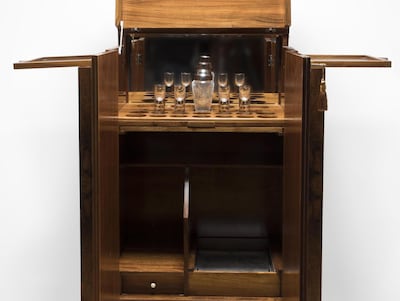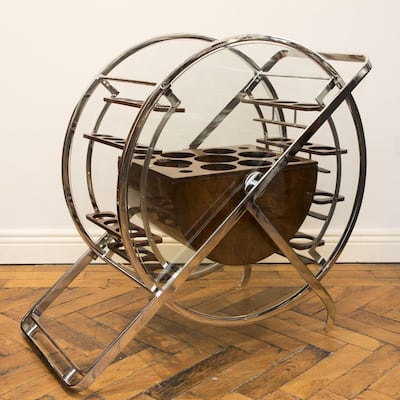The art deco revolution of style and design reached its apex of popularity between the two World Wars and was all about combining contemporary living with art.
"It is really a period of 10 years, from the mid-1920s to the 1930s, that collectors are interested in," says Niall Mullen, who specialises in the craft that epitomises the Roaring '20s. "The original movement used tropical woods to give exotic effects with decadent, polished, high-shine finishes – but after the war original timbers [such as mahogany and pine] were used so the quality is not the same."
The materials used are what make art deco pieces exceptional, resulting in an almost cult following. This also goes to explain why prices for such items are more expensive than for older furniture.
Many of the woods used in pieces from this time are today on protected species lists. As an example, Mullen points to a Rio rosewood cabinet: this wood is on the Convention on International Trade in Endangered Species list, so if shipped to certain parts of the world it will need the equivalent of a passport to prove its provenance.
Mullen points out that two pieces really define the era: the Folies Bergère bronze sculptures – after the eponymous cabaret hall in Paris – and the cocktail cabinet, which has seen a recent surge of popularity.

Though cocktail cabinets were around in Victorian times, it was really the art deco period when they became items of furniture, as the drinks and parties became more popular. The cocktail became known as a drink laced with a kick, reflecting the origin of the word: when inferior horses had their tails docked and were given a suppository of ginger to make them appear lively at marts.
Ingenious designs
Considering many of the cabinets stem from the time of prohibition in the US, it is no wonder that these objects appear discreet when closed, but when opened up have playful ingenious designs and were risqué for their period. They pay homage to post-first World War hedonism, when Edwardian corsets were cast aside for flapper dresses, and people quaffed alcohol while dancing the Charleston in underground speakeasies – as chronicled in F Scott Fitzgerald’s classic book of the era, The Great Gatsby.
Mullen will host a sale with all items, both on his website and in his showroom, reduced by between 30 and 50 per cent.
Included in the sale are six art deco cocktail cabinets. There is the impressive burr walnut Skyscraper (was €8,950, has been reduced to €5,800), which sits in the window of his Francis Street shop. Its bold exterior geometry hides decadent internal details, including a mirrored pull-out shelf which Mullen suggests was for nefarious purposes: cocaine was sold in Harrods until 1916, and was not banned in the US until 1920.

A more playful example is a rare rotating drinks trolley operated by a foot pedal until your tipple of choice spins around. “It took over a year to restore,” says Mullen, “as it had to be taken apart, piece by piece, rechromed and reassembled. The restoration company did not want to touch it at first, as it was such an intricate job.” (€7,500, now €5,250).
Also included in the sale are the Metamorphic cocktail cabinet (€5,250, now €3,150) and a pair of art deco chrome and leather armchairs (€5,800, now €2,900).
The sale runs from February 4th-11th.










